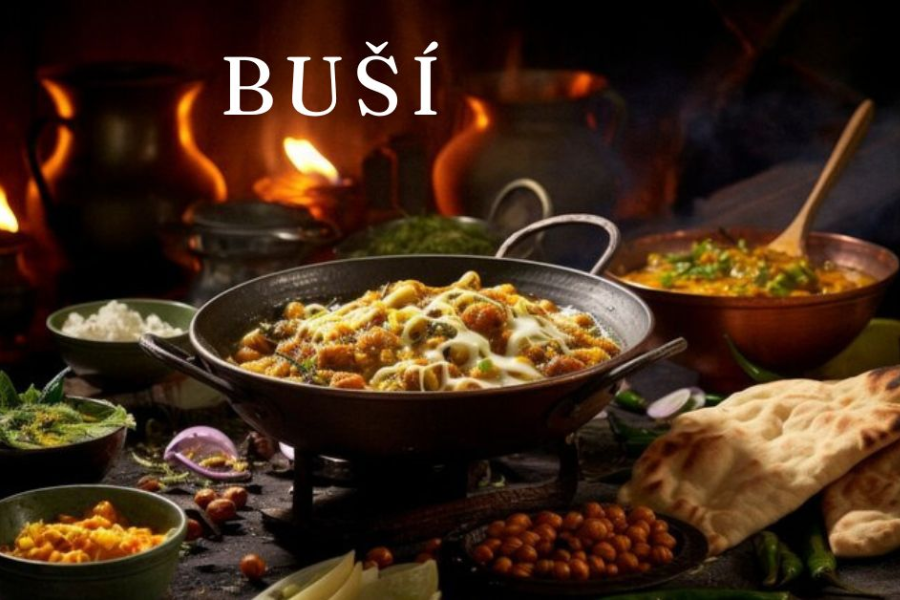Buší: From Traditional Recipe to Modern Culinary Delight
Buší: A Culinary Journey Through Time and Culture
Buší is more than just a meal—it’s a cultural treasure that has delighted generations with its unique flavors and rich history. Originating in the heartlands of Eastern Europe, Buší holds a special place in the region’s culinary traditions, embodying a deep connection to the land, family, and community. Each bite of this time-honored dish tells a story, tracing back through the ages to a time when food was a testament to resilience and celebration.
In this article, we take you on a journey to uncover the origins, evolution, and lasting appeal of Buší. We’ll explore how it has maintained its cultural roots while adapting to modern tastes, all while preserving a commitment to sustainability.
A Symbol of Tradition: The Roots of Buší
Buší’s origins lie in the rural kitchens of Eastern Europe, where families relied on simple, hearty ingredients to sustain them through long winters and celebrate the bounty of harvests. More than just food, Buší became a symbol of endurance and creativity, made with care from whatever was available. It evolved with the seasons, as local fruits, grains, and traditions shaped its flavors.
Despite the changing world, Buší has remained a constant—a comforting dish that connects us to our shared history. Passed down through families for generations, it embodies the spirit of togetherness, family bonds, and the joy of communal celebrations. With every mouthful, you’re tasting a piece of culture and history.
Evolution of Buší: From Hearth to Haute Cuisine
Although its origins are humble, Buší has evolved over time, embracing new ingredients and techniques while staying true to its essence. Today, modern interpretations of Buší are served in homes and upscale restaurants alike, offering a fresh take on this classic dish.
Regional variations abound, each telling a different story of the local culinary traditions and ingredients that have influenced Buší’s development. In rural areas, it remains a simple, authentic dish made from locally sourced produce, while in urban settings, chefs have reimagined it with global influences, creating innovative fusions that delight the palate.
What remains constant is Buší’s soul—its heartiness, warmth, and deep-rooted connection to culture and tradition.
A Global Favorite: The Growing Appeal of Buší
Buší’s unique combination of flavors, simplicity, and adaptability has garnered it a devoted following around the world. It has become a culinary icon, beloved for its comforting taste and timeless appeal, making it a go-to dish for all occasions.
In recent years, Buší’s rise in popularity has also fueled a surge in culinary tourism. Food enthusiasts are now traveling to Eastern Europe to experience Buší in its homeland, indulging in immersive culinary tours that offer a taste of its rich history and heritage.
The Plant Behind the Dish: Discovering Buší
Interestingly, Buší isn’t just a dish—it’s also the name of a plant, known scientifically as Busius maximum. Native to the tropical regions of South America, this plant has small, fragrant flowers and lush foliage, thriving in warm, humid climates. Over time, Busius maximum became part of Eastern European culinary traditions, demonstrating its versatility and cultural significance.
What started as a revered plant for its medicinal properties in ancient civilizations has transformed into a staple ingredient in many beloved dishes, including the iconic Buší meal.
Health and Environmental Benefits of Buší
Buší offers more than just great taste; it’s also packed with health benefits. Rich in antioxidants and essential nutrients, Buší supports immune function, aids digestion, and provides a natural energy boost. Its anti-inflammatory properties make it a popular choice for those seeking natural remedies for common ailments.
In addition to its health benefits, Buší has a positive impact on the environment. As a renewable resource, the plant contributes to eco-friendly practices by reducing reliance on synthetic products and lowering carbon emissions.
Endless Versatility: Buší in Food and Beyond
Buší’s versatility extends beyond the kitchen. The fragrant leaves and flowers of Busius maximum can be used in a variety of dishes, from soups and salads to more elaborate meals. Its adaptability makes it a favorite among chefs and home cooks alike.
Beyond its culinary uses, Buší has also found a place in the beauty industry. Known for its moisturizing and anti-aging properties, Buší extract is often included in skincare products such as creams and face masks, offering natural solutions for radiant skin.
Buší’s Role in Traditional Medicine
Throughout history, Buší has been respected for its medicinal properties. Ancient civilizations used Buší as a remedy for ailments such as fevers, digestive issues, and skin problems. Its revered status in traditional healing practices is a testament to its powerful therapeutic qualities.
Modern research is uncovering even more potential health benefits of Buší, including its possible role in cancer prevention, heart health, and diabetes management. The ongoing exploration of Buší’s medicinal properties highlights its potential as a natural solution to modern health challenges.
Cultivating Buší for a Sustainable Future
Buší is not only easy to grow, but it also thrives in warm, humid environments, making it a favorite for both home gardeners and professional farmers. The plant requires well-drained soil, regular watering, and sunlight to flourish. Sustainable farming practices are key to ensuring the preservation of Buší’s natural habitats for future generations.
As a renewable, biodegradable, and non-toxic resource, Buší stands out as an eco-friendly alternative to synthetic materials, offering solutions to a wide range of environmental issues. By supporting fair trade practices and adhering to sustainable harvesting techniques, we can help preserve Buší’s ecosystem for years to come.
Looking Ahead: The Future of Buší
As the world shifts towards more sustainable and eco-friendly choices, Buší’s future looks brighter than ever. From eco-conscious packaging solutions to innovative uses in fashion and farming, Buší is poised to play a significant role in addressing some of today’s most pressing environmental challenges.
FAQs:
Q1: What is Buší?
Buší is a traditional Eastern European dish known for its hearty flavors and deep cultural significance. It has evolved over time to become a symbol of community, family, and tradition.
Q2: Where did Buší originate?
Buší originated in the rural kitchens of Eastern Europe, where families used local, simple ingredients to create a meal that could sustain them through long winters and celebrate bountiful harvests.
Q3: Is Buší a plant or a dish?
Buší refers to both a dish and a plant. The dish comes from Eastern Europe, while the plant, Busius maximum, is native to tropical South America and has become an integral part of the Buší recipe.
Q4: What are the health benefits of Buší?
Buší is rich in antioxidants, vitamins, and minerals. It supports immune function, aids digestion, and offers anti-inflammatory benefits, making it a great natural remedy for various health issues.
Q5: How has Buší evolved over the years?
While Buší has its roots in traditional Eastern European cuisine, it has evolved with new ingredients and techniques. Today, chefs worldwide incorporate global influences, creating modern interpretations of this iconic dish.
Q6: Is Buší sustainable?
Yes, Buší is known for its sustainability. The plant used in the dish, Busius maximum, is renewable, biodegradable, and eco-friendly. It promotes environmentally conscious choices and has a lower environmental impact compared to synthetic alternatives.
Q7: Can I grow Buší at home?
Yes, Buší can be grown at home or on farms. The plant thrives in warm, humid conditions and well-drained soil. Proper care, including adequate sunlight and watering, is essential for successful growth.
Q8: How is Buší used in modern cuisine?
Buší is incredibly versatile in modern cuisine. It can be found in soups, salads, and even fusion
dishes that mix traditional Eastern European flavors with global influences. The plant’s extract is also used in skincare products for its moisturizing and anti-aging properties.
Q9: What role does Buší play in traditional medicine?
Buší has long been respected for its therapeutic properties. It has been used for centuries to treat ailments like fevers, digestive issues, and skin problems. Modern research is exploring its potential benefits for heart health, diabetes, and cancer prevention.
Q10: How does Buší contribute to culinary tourism?
Buší has gained global appeal, and its places of origin in Eastern Europe have become popular destinations for culinary tourists. Visitors can immerse themselves in the rich history of the dish by participating in food tours and tasting authentic Buší.
Conclusion
Buší is more than just a meal—it’s a culinary symbol of endurance, community, and tradition. Originating in the heart of Eastern Europe, Buší has evolved over time while preserving its cultural roots. Its rich flavors, simple ingredients, and heartwarming stories of resilience and creativity have allowed it to transcend borders and become a global favorite. With its health benefits, sustainability, and versatility, Buší continues to captivate both the culinary world and those who seek a deeper connection to the food they eat. Whether you’re enjoying a traditional serving or a modern twist, every bite of Buší carries with it a taste of history, culture, and innovation.






